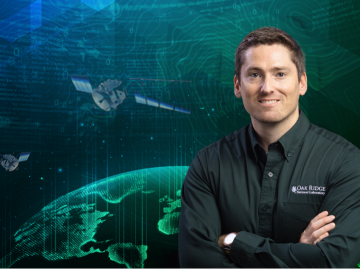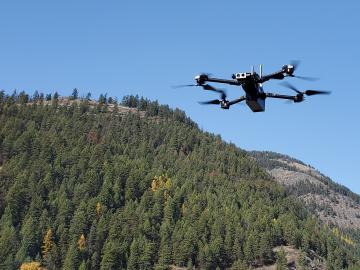
Filter News
Area of Research
- (-) Energy Science (87)
- (-) Functional Materials for Energy (1)
- (-) National Security (26)
- (-) Neutron Science (37)
- Advanced Manufacturing (2)
- Biology and Environment (68)
- Biology and Soft Matter (1)
- Computational Biology (1)
- Computational Engineering (2)
- Computer Science (10)
- Electricity and Smart Grid (3)
- Energy Frontier Research Centers (1)
- Fusion and Fission (10)
- Fusion Energy (7)
- Isotopes (1)
- Materials (86)
- Materials for Computing (11)
- Mathematics (1)
- Nuclear Science and Technology (14)
- Nuclear Systems Modeling, Simulation and Validation (1)
- Quantum information Science (9)
- Sensors and Controls (1)
- Supercomputing (94)
News Topics
- (-) Advanced Reactors (7)
- (-) Coronavirus (24)
- (-) Exascale Computing (2)
- (-) Grid (43)
- (-) Hydropower (3)
- (-) Machine Learning (21)
- (-) Nanotechnology (18)
- (-) Physics (11)
- (-) Quantum Science (9)
- 3-D Printing/Advanced Manufacturing (85)
- Artificial Intelligence (25)
- Big Data (13)
- Bioenergy (33)
- Biology (20)
- Biomedical (21)
- Biotechnology (6)
- Buildings (38)
- Chemical Sciences (17)
- Clean Water (10)
- Composites (18)
- Computer Science (50)
- Critical Materials (9)
- Cybersecurity (25)
- Energy Storage (75)
- Environment (64)
- Fossil Energy (3)
- Frontier (3)
- Fusion (3)
- High-Performance Computing (12)
- Isotopes (1)
- Materials (48)
- Materials Science (49)
- Mathematics (3)
- Mercury (3)
- Microelectronics (1)
- Microscopy (10)
- Molten Salt (1)
- National Security (37)
- Neutron Science (121)
- Nuclear Energy (13)
- Partnerships (16)
- Polymers (12)
- Quantum Computing (1)
- Security (16)
- Simulation (4)
- Space Exploration (6)
- Statistics (1)
- Summit (10)
- Transportation (70)
Media Contacts

Two years after ORNL provided a model of nearly every building in America, commercial partners are using the tool for tasks ranging from designing energy-efficient buildings and cities to linking energy efficiency to real estate value and risk.

When Hurricane Maria battered Puerto Rico in 2017, winds snapped trees and destroyed homes, while heavy rains transformed streets into rivers. But after the storm passed, the human toll continued to grow as residents struggled without electricity for months. Five years later, power outages remain long and frequent.

Five technologies invented by scientists at the Department of Energy’s Oak Ridge National Laboratory have been selected for targeted investment through ORNL’s Technology Innovation Program.

Researchers at the Department of Energy’s Oak Ridge National Laboratory and their technologies have received seven 2022 R&D 100 Awards, plus special recognition for a battery-related green technology product.

When Matt McCarthy saw an opportunity for a young career scientist to influence public policy, he eagerly raised his hand.

As climate change leads to larger and more frequent wildfires, researchers at ORNL are using sensors, drones and machine learning to both prevent fires and reduce their damage to the electric grid.

To further the potential benefits of the nation’s hydropower resources, researchers at Oak Ridge National Laboratory have developed and maintain a comprehensive water energy digital platform called HydroSource.

When the COVID-19 pandemic stunned the world in 2020, researchers at ORNL wondered how they could extend their support and help

Scientists at ORNL used neutron scattering to determine whether a specific material’s atomic structure could host a novel state of matter called a spiral spin liquid.

To solve a long-standing puzzle about how long a neutron can “live” outside an atomic nucleus, physicists entertained a wild but testable theory positing the existence of a right-handed version of our left-handed universe.


